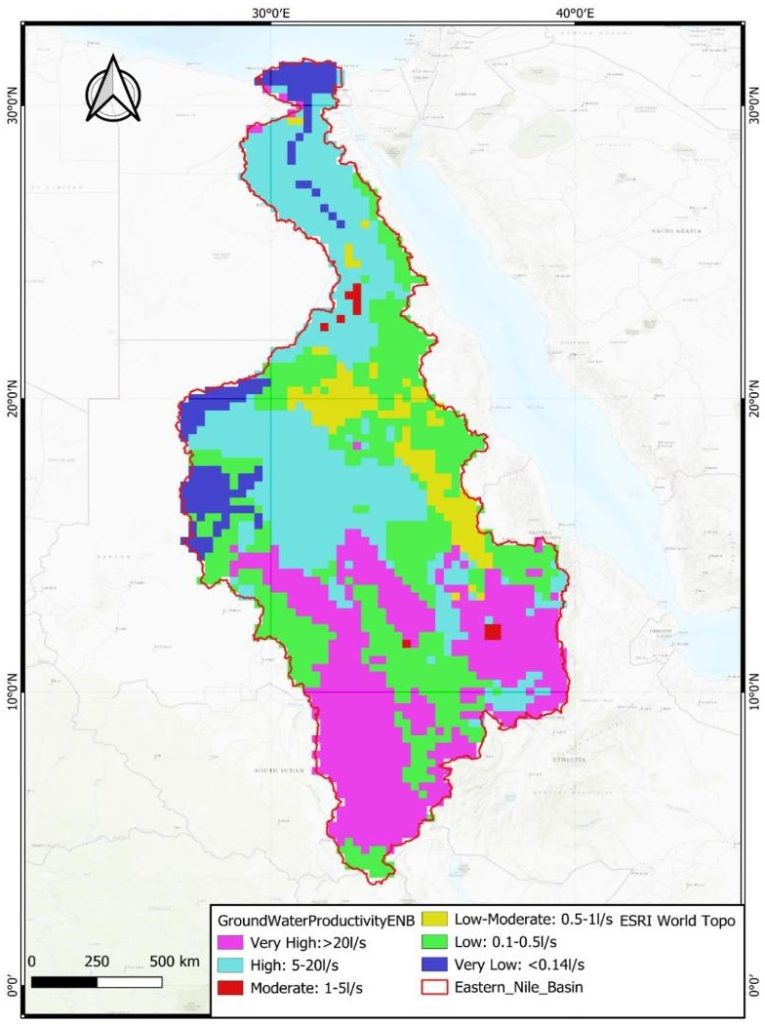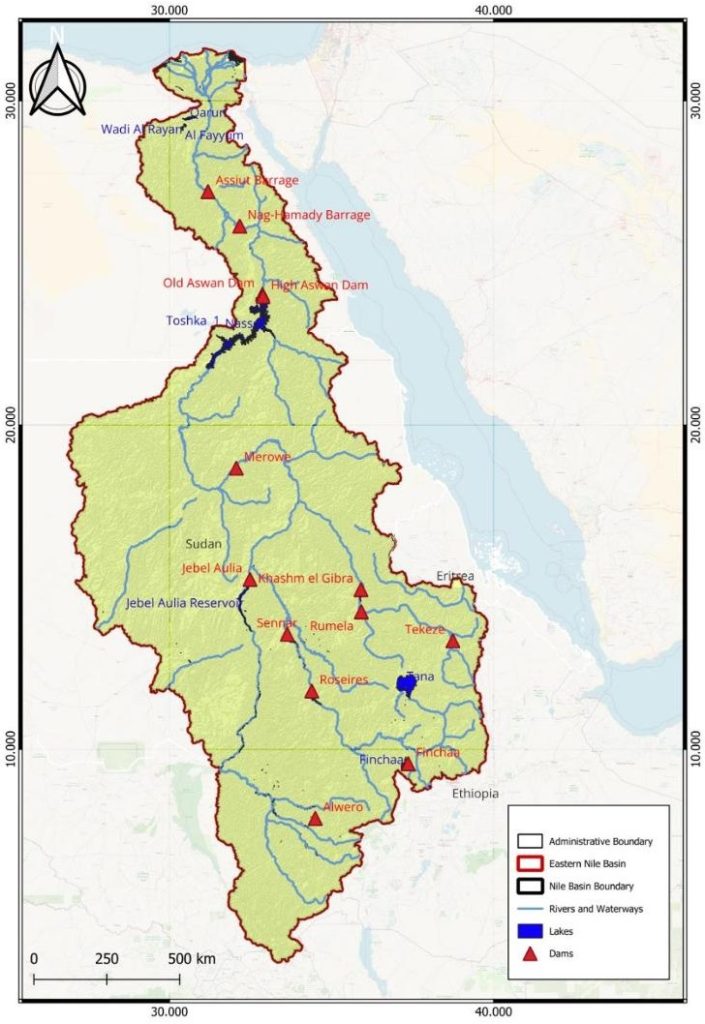The Nile is the major source of water supply in Egypt. An average of 55.5 billion m3 of water is provided from the river every year, thereby contributing to about 97% of its renewable water resource (Fanack Water, 2024). Even if extraction of groundwater, in the western desert and Sinai Peninsula, is increasing, it remains challenging and costly; rainfall, except in coastal areas, is scarce (Berhanu et al., 2014; Elmenoufy et al., 2017). Ethiopia has 12 river basins, numerous lakes, and wetlands, and it benefits of an annual water flow of 122 billion m3, nonetheless, water resources are distributed very unevenly, and the groundwater potential is relatively low (Amer et al., 2005; Awlachew et al., 2007). Sudan and South Sudan receive annually 93 billion m3 from rivers alone, including 49 billion m3 of renewable freshwater in South Sudan. The rainfall varies: 0 to 120 mm in Sudan, to 1,600 mm in the southernmost part of South Sudan. Groundwater resources in both countries include the Nubian Sandstone formation and Um Ruwaba aquifer (Omer, 2015).

